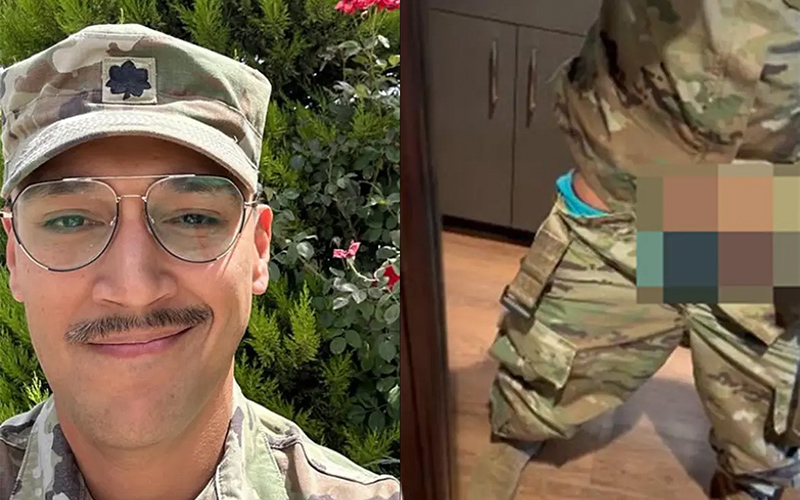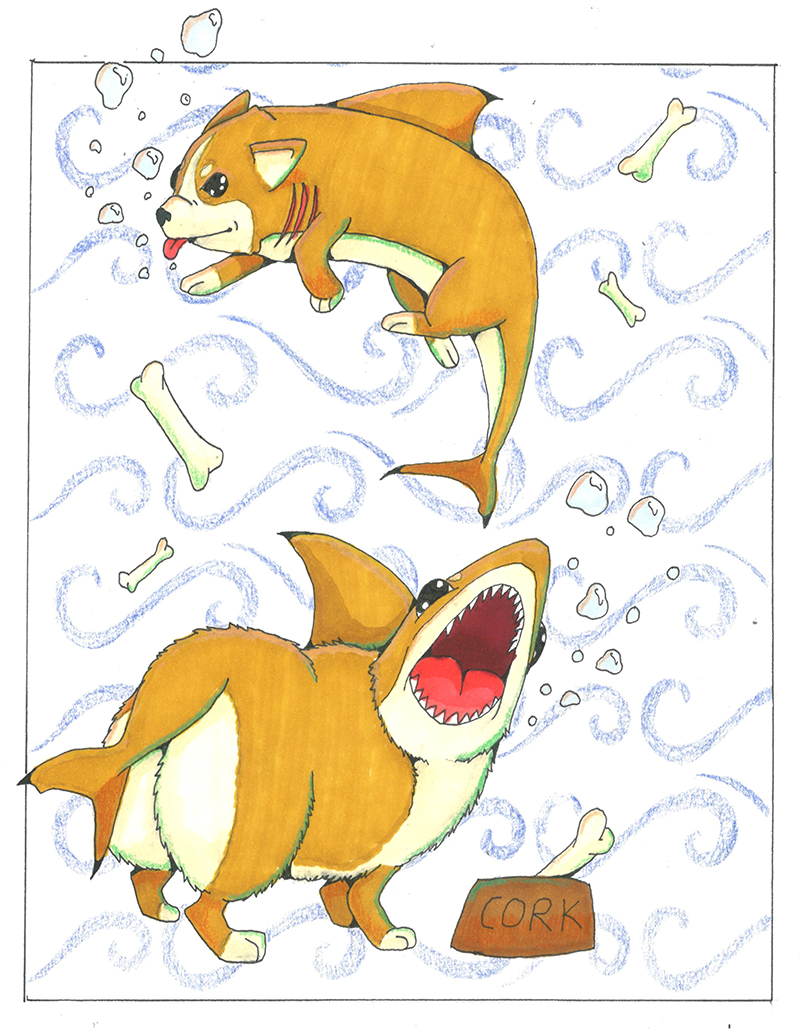40 Years of Elton John’s “Goodbye Yellow Brick Road”
 Sir Elton John is often recognized by fans and critics more for his long string of classic singles than for his albums. It is true that during certain periods of his career — the 1980s leap to mind immediately — his albums tended to have a couple great singles and then loads of filler. That said, it is also a fact that Elton John has released some absolutely fantastic albums over the course of his legendary career. For example, Too Low for Zero (1983), which includes “I’m Still Standing” and “I Guess That’s Why They Call it the Blues,” is superb, and without question his best of the ‘80s. Some of his more recent work, particularly Songs from the West Coast (2001), has been excellent as well. Elton’s most essential recordings, though, came during his earlier years: Elton John (1970), Tumbleweed Connection (1970), Madman Across the Water (1971),Honky Chateau (1972), Don’t Shoot Me I’m Only the Piano Player (1973) and Captain Fantastic and the Brown Dirt Cowboy (1975) should all be included in any serious listing of great albums of the ‘70s. There is one in particular, though, that should be the cornerstone of any Elton John collection: his 2-LP, 17-track opus Goodbye Yellow Brick Road, released in the fall of 1973. Somewhat predictably, to commemorate the album’s 40th anniversary (and Elton’s 67th birthday, which is Tuesday, March 25), Goodbye Yellow Brick Road has received the deluxe reissue treatment. The album has been painstakingly remastered by Bob Ludwig, the best in the business, from the original analogue source tapes. The most lavish configuration of the reissue includes a plethora of bonus material: a collection of covers of some of the album’s key tracks by current artists, some B-sides and extra material from around the time of the album’s release, live recordings, a book and a DVD. For vinyl enthusiasts, there’s even a limited-edition 2-LP set on yellow vinyl that is available separately. Of course, if you just want to pick up the remastered edition of the album itself, it is available as a single CD without all the frills and extras. While the extra goodies are nice, the album itself remains the main attraction. From the eerie opening bell-tones of “Funeral for a Friend/Loves Lives Bleeding” to the beautifully layered vocals on the finale “Harmony,” Goodbye Yellow Brick Road is a profoundly entertaining listening experience that now sounds better than ever. Goodbye Yellow Brick Road contains some of Elton’s most pivotal singles, with the title-song first and foremost among them. The tale of a young (gay?) man from a small town entangled by the glitz and decadence of the big city seems to capture the overriding aura of the entire ‘70s in a compact 3 minutes and 14 seconds. “Goodbye Yellow Brick Road” is one of Elton’s signature songs. Bernie Taupin’s poignant and sharply pointed lyric coupled with Elton’s note-perfect delivery (including the wonderfully bitchy line, “It’ll take you a couple of vodka and tonics to set you on your feet again”), and of course that soaring falsetto chorus, combine to make it one of the great singles of the ‘70s. The imagery of traveling the ‘yellow brick road’ only to arrive at a destination that is not quite what was imagined in those naive daydreams of youth is a universal message that still resonates. The listener keenly feels the pain of shattered illusions and lost innocence. The song’s sadly wistful tone suggests that the young man’s yearning to get “back to the howling old owl in the woods” is just a fond dream. There is also the presence of the biggest-selling single of all time, a song that became a hit in three different decades with three different versions, all by Elton himself. “Candle in the Wind,” a deeply touching ode to Marilyn Monroe the person rather than the persona, has become an essential standard in popular music. The original recording on Goodbye Yellow Brick Road was never released as a single in the US, but it was popular and received significant radio play. It was a single internationally (America got “Bennie and the Jets” instead), and hit #11 in the UK. Then in the ‘80s it hit #6 in America when Elton released a live version as a single from his excellentLive in Australia with the Melbourne Symphony Orchestra album. And finally, in the wake of the death of Diana, Princess of Wales, a re-worked version titled “Candle in the Wind 1997” with the lyric changed to reflect Diana’s death was a worldwide #1, and became the biggest-selling single in the history of the format. A song has to be pretty remarkable to have achieved this impressive trifecta, and indeed it is. If those two classic singles were all Goodbye Yellow Brick Road had to offer, it’d still be worth the price of admission; but we’ve just scratched the surface. Elton hit #1 in the US with “Bennie and the Jets,” a song that once again explores the decadent ‘70s with a lyric about a fictional glamorous rock band sung over Elton’s propulsive, electrifying piano. Although “Bennie and the Jets” is a studio recording, audience noise, whistles and hand-claps were added to inject the feel and excitement of a live performance into the song. The lead single from Goodbye Yellow Brick Road was the hard-rocking “Saturday Night’s Alright (for Fighting),” a raucous number that has often closed Elton’s concerts over the years. It’s edgier than the typical Elton John single, and its chart performance in the US reflects that — it stopped short of the Top 10, stalling at #12. In the years since, it has become recognized as a classic and is now one of Elton’s most immediately recognizable songs, thanks in large part to its blazing guitar riff and that “Saturday! Saturday!” refrain. Given that Goodbye Yellow Brick Road was released at the peak of Elton John’s popularity in the ’70s, it features any number of songs that could have been hit singles. “Harmony” comes to mind immediately, and “Grey Seal” is another pop gem that radio likely would have embraced. But while Goodbye Yellow Brick Road is certainly loaded with strong and commercial pop songs, it goes far beyond that. Most notable is the 11-minute opening suite “Funeral for a Friend/Love Lies Bleeding.” With its bombastic layers of synthesizers, searing guitar, and some of Elton’s most dramatic piano work, it’s a suitably rousing and grandiose introduction to a double album that is nothing if not ambitious. There is no shortage of highlights beyond the iconic singles: “All The Girls Love Alice,” for instance, or the haunting “This Song Has No Title.” There’s the jaunty novelty track “Jamaica Jerk Off,” brimming with good humor and smiles, which segues into the somber ballad “I’ve Seen That Movie Too.” Goodbye Yellow Brick Road is an album of depth, complexity and of vast stylistic diversity. One of the most remarkable aspects of Goodbye Yellow Brick Road, especially given its length and the strength of its material, is that it was released right on the heels of another classic album.Don’t Shoot Me I’m Only the Piano Player hit stores a mere 8 months earlier. The smash hit “Daniel,” the second single from that album, was released barely 3 months prior to “Saturday Night’s Alright (for Fighting).” In fact, from the release of the Elton John album on April 10, 1970 through Goodbye Yellow Brick Road on October 5, 1973, Elton John issued an amazing 6 studio albums, all of which are generally considered classics, plus a well-received live album. That’s a wealth of great material in an incredibly short time — very few artists can match that achievement. Given that Elton’s next album, Caribou (released on June 28, 1974), is generally seen as a major step back in terms of overall quality, Goodbye Yellow Brick Road can rightly be considered both the peak and the end of his “golden years.” That’s not to say he hasn’t released some amazing work since, but never with such consistent and remarkable quality. Also worth noting is that Elton John was unleashing this astonishing burst of timeless material at a very young age — he was only 26 when Goodbye Yellow Brick Road hit stores. The album was produced by the legendary Gus Dudgeon, who’d worked with Elton since his self-titled 1970 album, and features Elton’s usual band of collaborators — the late Dee Murray on bass, the always solid Davey Johnstone on guitar, and Nigel Olsson on drums. The sessions for the album were originally planned for Jamaica, but Elton quickly abandoned that idea and retreated to the more familiar environs of the Chateau d’Herouville near Paris, France, where he’d recorded his previous two albums. Elton and his trusted team of collaborators were a tight unit, and that surely contributed to his ability to be remarkably prolific. Goodbye Yellow Brick Road is widely considered to be Elton John’s finest work, and it is also his most successful commercially. It spent eight weeks at #1 on the Billboard Top 200 Album Chart, and has sold over 8 million copies in the US alone. It’s a landmark album, and it’s certainly worthy of revisiting with a lavish new deluxe edition. For the more casual fans that are only familiar with Elton’s singles but are interested in delving deeper into his catalog, or for longtime fans who simply want to revisit an old favorite, the new reissue of Goodbye Yellow Brick Road is a must-own. It belongs in the home of any fan of great pop music.
Sir Elton John is often recognized by fans and critics more for his long string of classic singles than for his albums. It is true that during certain periods of his career — the 1980s leap to mind immediately — his albums tended to have a couple great singles and then loads of filler. That said, it is also a fact that Elton John has released some absolutely fantastic albums over the course of his legendary career. For example, Too Low for Zero (1983), which includes “I’m Still Standing” and “I Guess That’s Why They Call it the Blues,” is superb, and without question his best of the ‘80s. Some of his more recent work, particularly Songs from the West Coast (2001), has been excellent as well. Elton’s most essential recordings, though, came during his earlier years: Elton John (1970), Tumbleweed Connection (1970), Madman Across the Water (1971),Honky Chateau (1972), Don’t Shoot Me I’m Only the Piano Player (1973) and Captain Fantastic and the Brown Dirt Cowboy (1975) should all be included in any serious listing of great albums of the ‘70s. There is one in particular, though, that should be the cornerstone of any Elton John collection: his 2-LP, 17-track opus Goodbye Yellow Brick Road, released in the fall of 1973. Somewhat predictably, to commemorate the album’s 40th anniversary (and Elton’s 67th birthday, which is Tuesday, March 25), Goodbye Yellow Brick Road has received the deluxe reissue treatment. The album has been painstakingly remastered by Bob Ludwig, the best in the business, from the original analogue source tapes. The most lavish configuration of the reissue includes a plethora of bonus material: a collection of covers of some of the album’s key tracks by current artists, some B-sides and extra material from around the time of the album’s release, live recordings, a book and a DVD. For vinyl enthusiasts, there’s even a limited-edition 2-LP set on yellow vinyl that is available separately. Of course, if you just want to pick up the remastered edition of the album itself, it is available as a single CD without all the frills and extras. While the extra goodies are nice, the album itself remains the main attraction. From the eerie opening bell-tones of “Funeral for a Friend/Loves Lives Bleeding” to the beautifully layered vocals on the finale “Harmony,” Goodbye Yellow Brick Road is a profoundly entertaining listening experience that now sounds better than ever. Goodbye Yellow Brick Road contains some of Elton’s most pivotal singles, with the title-song first and foremost among them. The tale of a young (gay?) man from a small town entangled by the glitz and decadence of the big city seems to capture the overriding aura of the entire ‘70s in a compact 3 minutes and 14 seconds. “Goodbye Yellow Brick Road” is one of Elton’s signature songs. Bernie Taupin’s poignant and sharply pointed lyric coupled with Elton’s note-perfect delivery (including the wonderfully bitchy line, “It’ll take you a couple of vodka and tonics to set you on your feet again”), and of course that soaring falsetto chorus, combine to make it one of the great singles of the ‘70s. The imagery of traveling the ‘yellow brick road’ only to arrive at a destination that is not quite what was imagined in those naive daydreams of youth is a universal message that still resonates. The listener keenly feels the pain of shattered illusions and lost innocence. The song’s sadly wistful tone suggests that the young man’s yearning to get “back to the howling old owl in the woods” is just a fond dream. There is also the presence of the biggest-selling single of all time, a song that became a hit in three different decades with three different versions, all by Elton himself. “Candle in the Wind,” a deeply touching ode to Marilyn Monroe the person rather than the persona, has become an essential standard in popular music. The original recording on Goodbye Yellow Brick Road was never released as a single in the US, but it was popular and received significant radio play. It was a single internationally (America got “Bennie and the Jets” instead), and hit #11 in the UK. Then in the ‘80s it hit #6 in America when Elton released a live version as a single from his excellentLive in Australia with the Melbourne Symphony Orchestra album. And finally, in the wake of the death of Diana, Princess of Wales, a re-worked version titled “Candle in the Wind 1997” with the lyric changed to reflect Diana’s death was a worldwide #1, and became the biggest-selling single in the history of the format. A song has to be pretty remarkable to have achieved this impressive trifecta, and indeed it is. If those two classic singles were all Goodbye Yellow Brick Road had to offer, it’d still be worth the price of admission; but we’ve just scratched the surface. Elton hit #1 in the US with “Bennie and the Jets,” a song that once again explores the decadent ‘70s with a lyric about a fictional glamorous rock band sung over Elton’s propulsive, electrifying piano. Although “Bennie and the Jets” is a studio recording, audience noise, whistles and hand-claps were added to inject the feel and excitement of a live performance into the song. The lead single from Goodbye Yellow Brick Road was the hard-rocking “Saturday Night’s Alright (for Fighting),” a raucous number that has often closed Elton’s concerts over the years. It’s edgier than the typical Elton John single, and its chart performance in the US reflects that — it stopped short of the Top 10, stalling at #12. In the years since, it has become recognized as a classic and is now one of Elton’s most immediately recognizable songs, thanks in large part to its blazing guitar riff and that “Saturday! Saturday!” refrain. Given that Goodbye Yellow Brick Road was released at the peak of Elton John’s popularity in the ’70s, it features any number of songs that could have been hit singles. “Harmony” comes to mind immediately, and “Grey Seal” is another pop gem that radio likely would have embraced. But while Goodbye Yellow Brick Road is certainly loaded with strong and commercial pop songs, it goes far beyond that. Most notable is the 11-minute opening suite “Funeral for a Friend/Love Lies Bleeding.” With its bombastic layers of synthesizers, searing guitar, and some of Elton’s most dramatic piano work, it’s a suitably rousing and grandiose introduction to a double album that is nothing if not ambitious. There is no shortage of highlights beyond the iconic singles: “All The Girls Love Alice,” for instance, or the haunting “This Song Has No Title.” There’s the jaunty novelty track “Jamaica Jerk Off,” brimming with good humor and smiles, which segues into the somber ballad “I’ve Seen That Movie Too.” Goodbye Yellow Brick Road is an album of depth, complexity and of vast stylistic diversity. One of the most remarkable aspects of Goodbye Yellow Brick Road, especially given its length and the strength of its material, is that it was released right on the heels of another classic album.Don’t Shoot Me I’m Only the Piano Player hit stores a mere 8 months earlier. The smash hit “Daniel,” the second single from that album, was released barely 3 months prior to “Saturday Night’s Alright (for Fighting).” In fact, from the release of the Elton John album on April 10, 1970 through Goodbye Yellow Brick Road on October 5, 1973, Elton John issued an amazing 6 studio albums, all of which are generally considered classics, plus a well-received live album. That’s a wealth of great material in an incredibly short time — very few artists can match that achievement. Given that Elton’s next album, Caribou (released on June 28, 1974), is generally seen as a major step back in terms of overall quality, Goodbye Yellow Brick Road can rightly be considered both the peak and the end of his “golden years.” That’s not to say he hasn’t released some amazing work since, but never with such consistent and remarkable quality. Also worth noting is that Elton John was unleashing this astonishing burst of timeless material at a very young age — he was only 26 when Goodbye Yellow Brick Road hit stores. The album was produced by the legendary Gus Dudgeon, who’d worked with Elton since his self-titled 1970 album, and features Elton’s usual band of collaborators — the late Dee Murray on bass, the always solid Davey Johnstone on guitar, and Nigel Olsson on drums. The sessions for the album were originally planned for Jamaica, but Elton quickly abandoned that idea and retreated to the more familiar environs of the Chateau d’Herouville near Paris, France, where he’d recorded his previous two albums. Elton and his trusted team of collaborators were a tight unit, and that surely contributed to his ability to be remarkably prolific. Goodbye Yellow Brick Road is widely considered to be Elton John’s finest work, and it is also his most successful commercially. It spent eight weeks at #1 on the Billboard Top 200 Album Chart, and has sold over 8 million copies in the US alone. It’s a landmark album, and it’s certainly worthy of revisiting with a lavish new deluxe edition. For the more casual fans that are only familiar with Elton’s singles but are interested in delving deeper into his catalog, or for longtime fans who simply want to revisit an old favorite, the new reissue of Goodbye Yellow Brick Road is a must-own. It belongs in the home of any fan of great pop music.
Support Metro Weekly’s Journalism
These are challenging times for news organizations. And yet it’s crucial we stay active and provide vital resources and information to both our local readers and the world. So won’t you please take a moment and consider supporting Metro Weekly with a membership? For as little as $5 a month, you can help ensure Metro Weekly magazine and MetroWeekly.com remain free, viable resources as we provide the best, most diverse, culturally-resonant LGBTQ coverage in both the D.C. region and around the world. Memberships come with exclusive perks and discounts, your own personal digital delivery of each week’s magazine (and an archive), access to our Member's Lounge when it launches this fall, and exclusive members-only items like Metro Weekly Membership Mugs and Tote Bags! Check out all our membership levels here and please join us today!





















You must be logged in to post a comment.